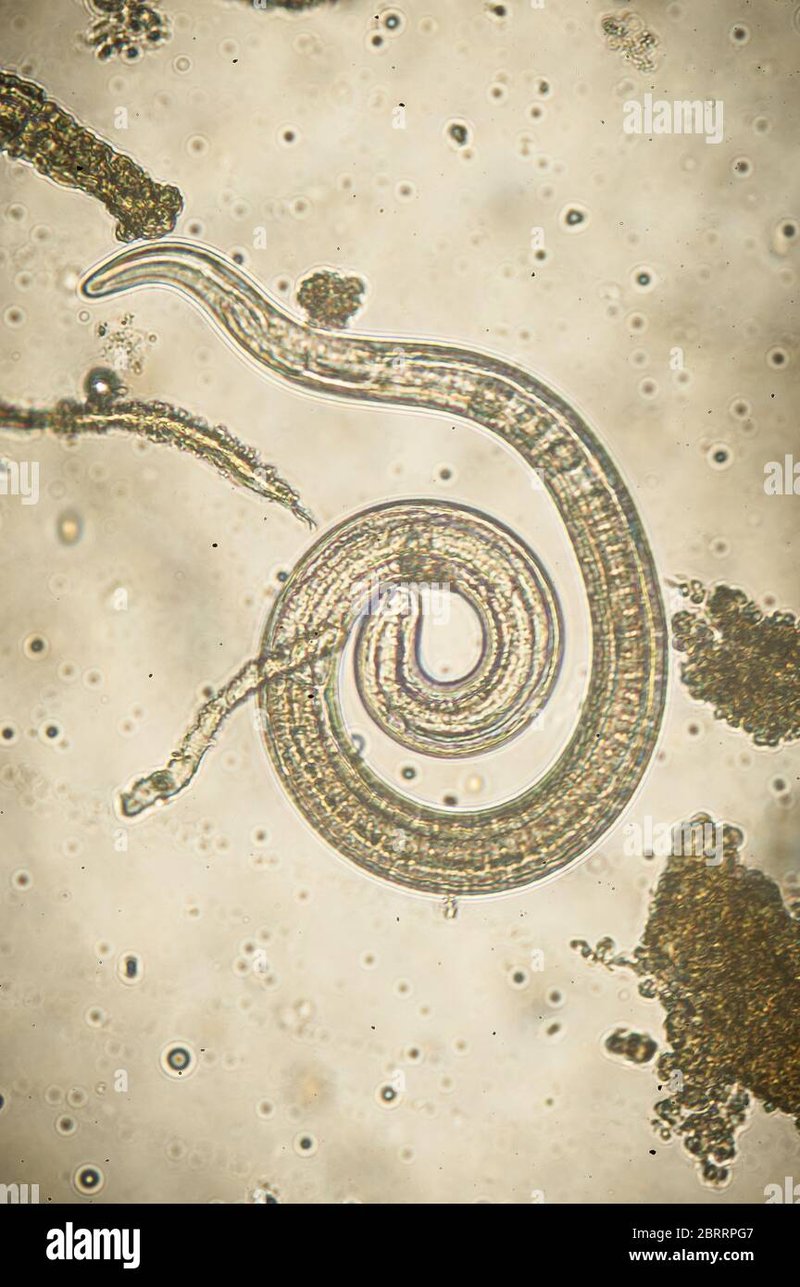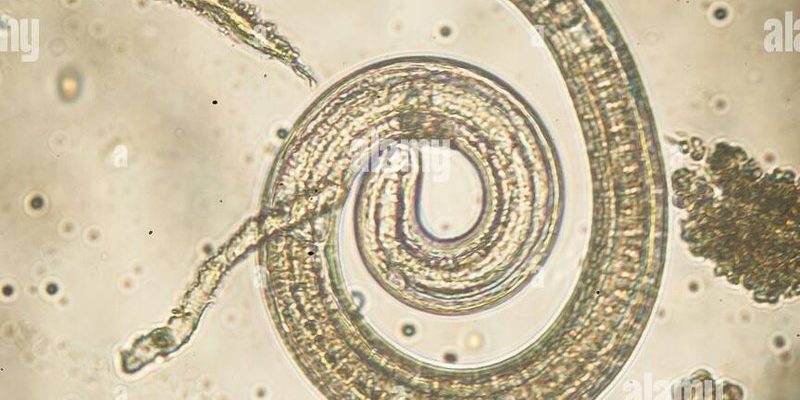
Imagine walking through a lush forest or along a serene riverbank. Everything seems fine, right? But lurking beneath the surface could be clues—clues that Trichinella spiralis could help uncover. This worm’s presence can signal changes in the environment, making it a nifty tool for researchers and ecologists. Today, let’s dive into how this little critter works as an environmental monitor and why it’s important for our ecosystems.
What is Trichinella Spiralis?
Trichinella spiralis is a tiny parasitic worm, part of a larger family known as Trichinella. It’s commonly found in the muscles of animals, particularly in pigs, and it’s famous for causing trichinosis in humans. But beyond its reputation as a parasite, Trichinella spiralis has some surprising roles in environmental science.
Life Cycle: The life cycle of Trichinella spiralis is fascinating. It starts when an animal, often a pig, ingests larvae from infected meat. Inside the host, these larvae develop into adult worms, mate, and eventually produce more larvae that can travel to the host’s muscles. When another animal eats that infected muscle, the cycle continues. This cycle highlights the worm’s resilience and adaptability, making it an interesting subject for scientists.
Why It Matters: Understanding Trichinella spiralis is crucial because it can provide insights into the health of ecosystems. When researchers study how prevalent this parasite is in a given area, they can assess both wildlife and agricultural health. So, it’s not just about avoiding undercooked pork; it’s about keeping tabs on nature’s balance.
How Trichinella Spiralis Serves as a Bioindicator
You might be wondering, “How does a parasite help monitor the environment?” Great question! Trichinella spiralis can tell scientists a lot about the conditions in an area.
Bioindication Explained: Bioindication is like having a nature-based alarm system. Certain organisms react to changes in their environment—think of them as canaries in a coal mine. When these organisms are studied, researchers can gauge environmental health. Trichinella spiralis can indicate the presence of specific ecological conditions, such as contamination and biodiversity.
Ecosystem Health: The presence or absence of Trichinella spiralis can reveal a lot about the health of local wildlife populations. For instance, if Trichinella is found in high numbers, it might indicate that certain wildlife is thriving. Conversely, low levels could suggest that the ecosystem is struggling, possibly due to pollution or habitat degradation.
Understanding these factors helps scientists prioritize conservation and restoration efforts. So, while Trichinella spiralis may seem like a nuisance to some, it plays a significant role in keeping our ecosystems in check.
The Role of Trichinella in Soil Health
Let’s shift our focus to the soil, a critical component of any ecosystem. Trichinella spiralis can help researchers understand soil health and its relationship with animal populations.
Nutrient Cycling: Soil is a living system, full of nutrients and organisms. Trichinella spiralis can affect nutrient cycling by influencing the populations of host animals. For example, if a region has a high prevalence of infected animals, it might lead to changes in the soil composition due to the nutrient-rich waste they leave behind.
Implications for Agriculture: Farmers can benefit significantly from understanding the interactions between Trichinella spiralis and soil health. If soil is enriched because of wildlife, it can enhance crop yields. However, it’s essential to manage this carefully to avoid risks of parasitic infections in livestock and humans.
You see, managing soil health is like maintaining a balanced diet—it requires understanding what’s going on below the surface. Trichinella can be part of that picture.
Investigating Trichinella for Pollution Monitoring
Pollution is a pressing global issue, and monitoring it can be a challenge. However, Trichinella spiralis can offer insights here, too.
Chemical Exposure: Studies indicate that Trichinella spiralis might respond to certain pollutants. When researchers find changes in Trichinella populations, it can signal underlying issues with chemical exposure. This could be anything from pesticides to heavy metals.
Bioaccumulation: Another interesting aspect is bioaccumulation. When pollutants enter the food chain, they can build up in organisms over time. Trichinella spiralis can act as a marker for this process, helping scientists understand how toxins move through ecosystems.
By keeping an eye on Trichinella, researchers can gain a clearer picture of how pollution affects not just the immediate environment but also the broader ecological system. It’s all interconnected!
Challenges in Using Trichinella Spiralis for Monitoring
While Trichinella spiralis is a fascinating tool for environmental monitoring, it’s not without its challenges.
Sampling Difficulties: One of the main hurdles is the difficulty in sampling. Trichinella isn’t present in every area, so finding it consistently can be tricky. Researchers need to carefully select sites and use effective sampling techniques.
Interpretation of Data: Another challenge is accurately interpreting the data collected from Trichinella studies. Just because it’s present doesn’t always mean the environment is healthy. It could also indicate an overpopulation of certain animals, which could be a sign of other ecological problems.
Regulatory Considerations: Lastly, there are regulatory factors to consider. In some places, monitoring Trichinella spiralis in wild animals may raise concerns about food safety and public health. Balancing these aspects is crucial for effective monitoring.
Despite these challenges, the potential benefits of using Trichinella spiralis as a bioindicator are worth exploring. Researchers are constantly finding innovative ways to tackle these issues!
Future Directions: Trichinella Spiralis in Environmental Monitoring
So, what does the future hold for Trichinella spiralis in environmental monitoring? Honestly, the possibilities are exciting!
Technological Advancements: As technology evolves, so does our ability to study Trichinella spiralis more effectively. Improved genetic testing and sampling techniques could provide deeper insights into its roles in various ecosystems.
Collaborative Research: There’s also a growing trend toward collaboration among scientists, farmers, and conservationists. By working together, they can share findings and develop better strategies for using Trichinella spiralis in monitoring efforts.
Public Awareness: Lastly, raising public awareness about Trichinella spiralis and its ecological implications can foster greater appreciation for the interconnectedness of life. When people understand how health and the environment are linked, they may be more inclined to support conservation efforts.
As research continues, we’re likely to uncover even more about the fascinating world of Trichinella spiralis and its role in environmental monitoring.
Using Trichinella spiralis for environmental monitoring is like unlocking a hidden treasure chest of information about our ecosystems. This tiny worm helps us understand everything from soil health to pollution levels and the dynamics of wildlife populations. By paying attention to these often-overlooked organisms, we can make informed decisions to protect our environment.
The world is more interconnected than we often realize. Each aspect of an ecosystem impacts another, and Trichinella spiralis serves as a reminder of that. So next time you enjoy a meal, think about all the unseen interactions happening in nature. Who knew that a little worm could hold the key to so much? Embracing these unconventional tools in environmental science can lead to meaningful change—one tiny organism at a time.

